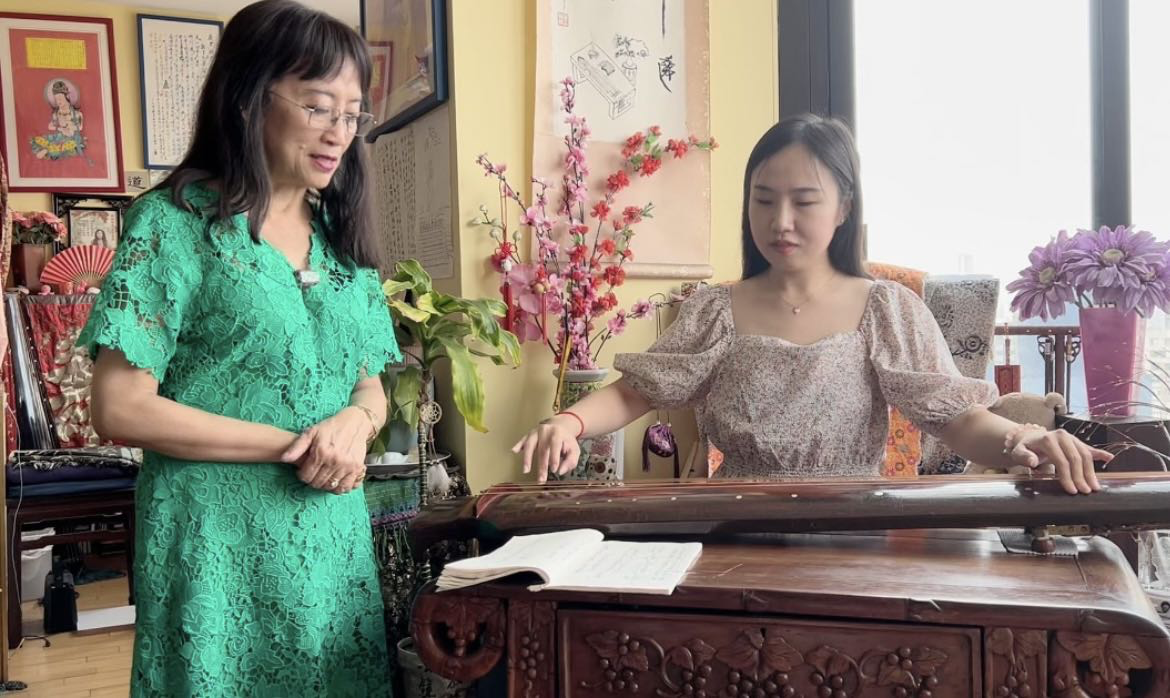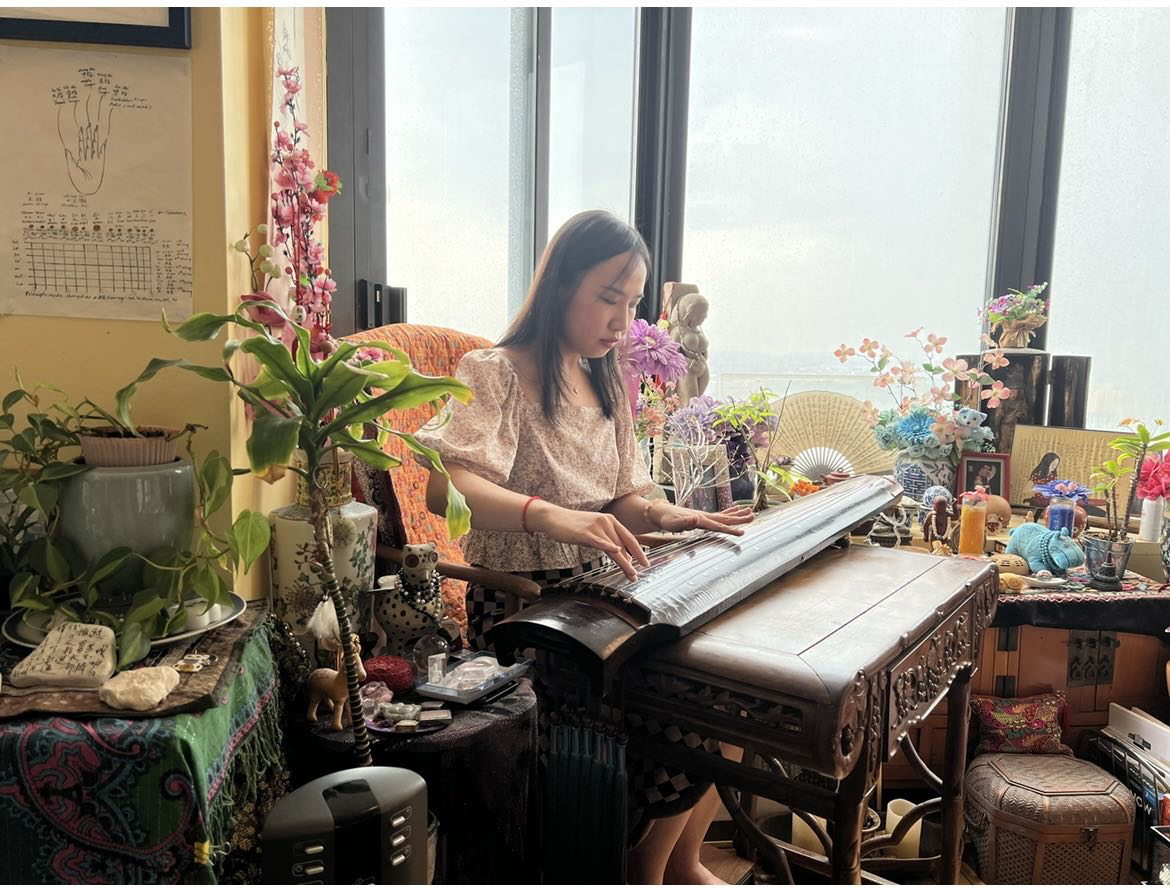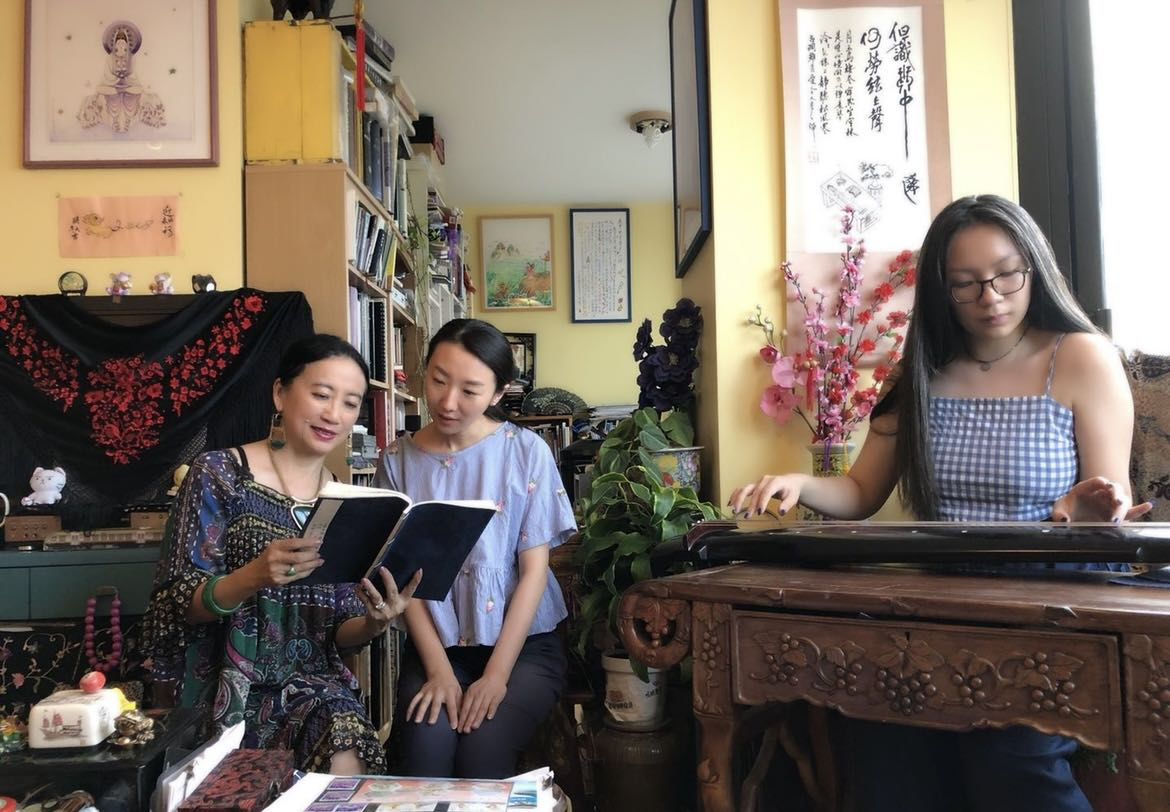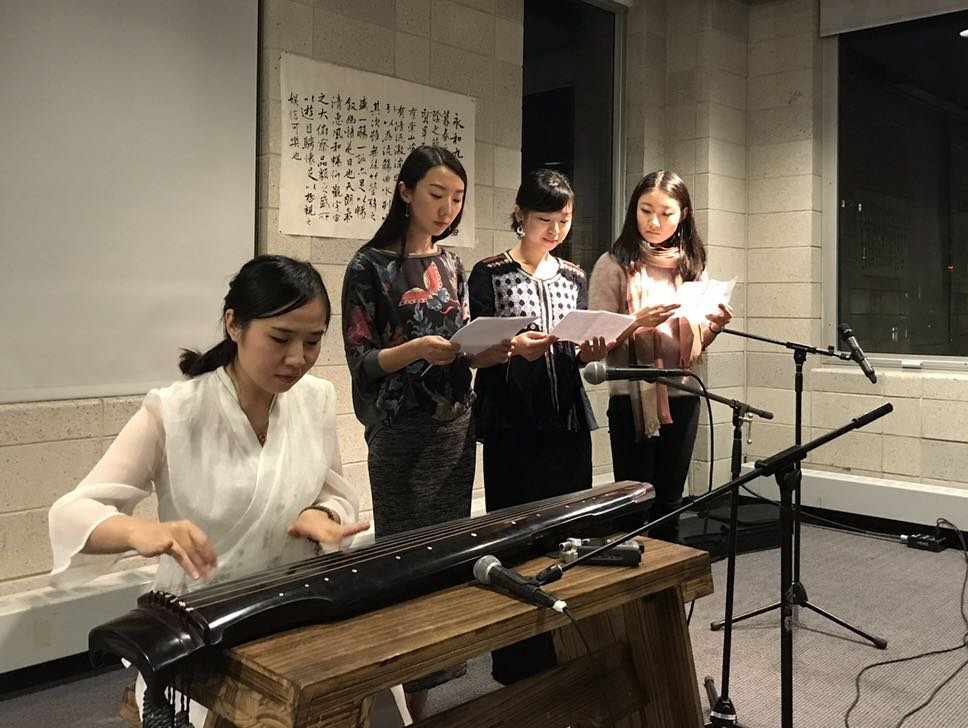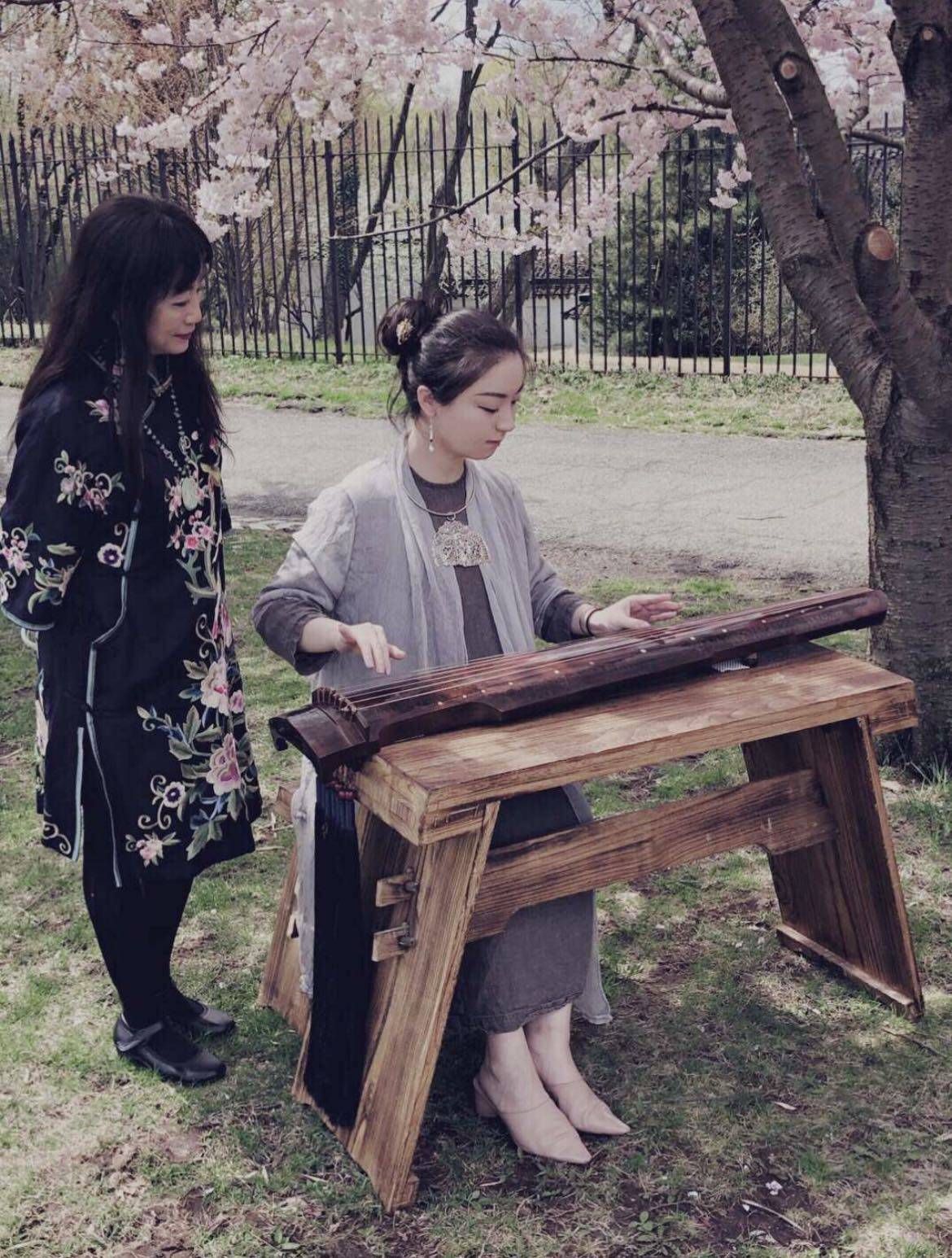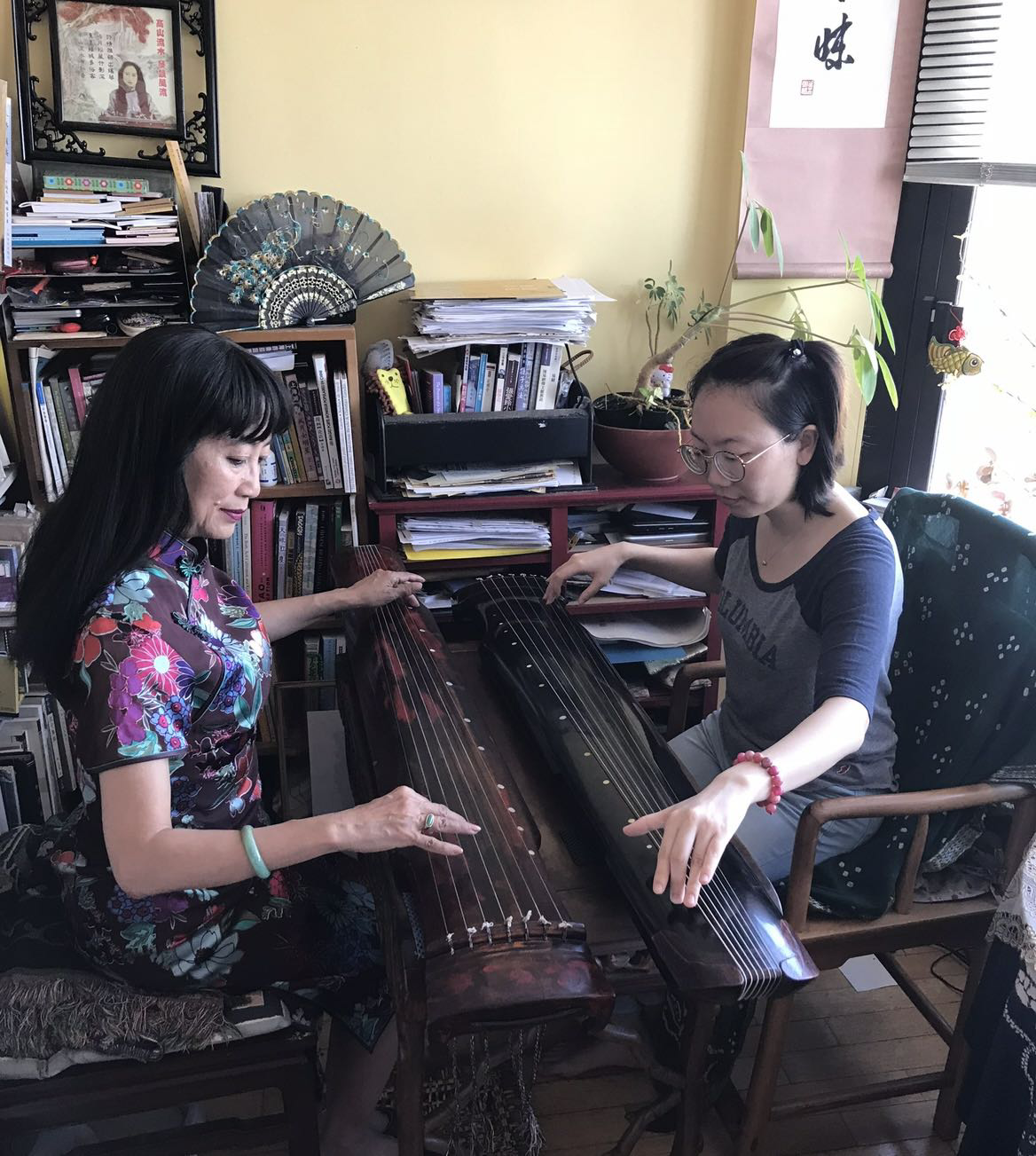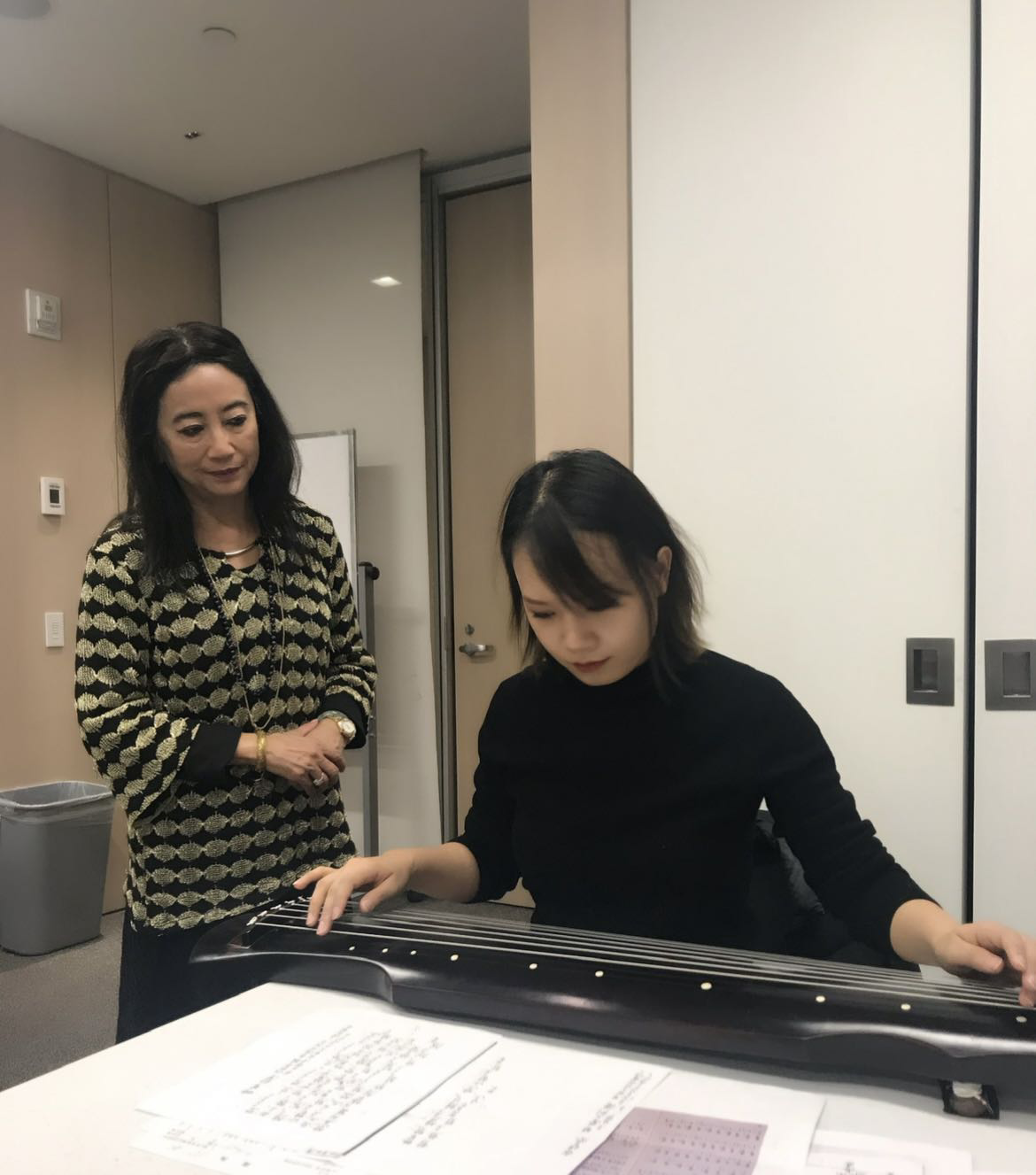Qin Courses 古琴课程
Learn the ancient arts of qin and calligraphy from a Chinese master
New York Qin and Calligraphy Society offers individualized instruction in the ancient Chinese arts of qin performance and calligraphy. Students can enroll to study one or more of these arts. The approach is both practical but also introduces the cultural background. Mingmei has taught these arts for many years to children and adults, both Chinese and Westerners.
古琴是一件独特的乐器,因为它是音乐,同时也是道。这在中国音乐史、甚至世界音乐史上是少见的。说明古琴除了作为音乐来看待之外,还紧扣着中国传统的哲学和美学思想。 作为中国文人士大夫的精致文化,古琴有一套完整的美学体系和弹奏的审美习惯。历代琴书均对古琴音乐的风格、指触、操缦的环境、琴声的美、琴音与道德的关系作出详尽的描述,形成了古琴独特的审美理想和情调。 古琴的形制、曲目、风格、美学、演奏习惯及指法技巧等均与整个中国文化和哲学,尤其是儒家、道家甚至后来的佛家思想有着不可分割的关系。将古琴音乐与整个中国思想文化结合起来理解,才能对其作出正确和全面的认识。
Ritual for qin performance, finger technique, tablature (notation) reading, qin music appreciation – aesthetic and culture.
古琴课程纲要: 弹琴礼仪、指法技巧、琴谱解读、乐曲欣赏、古琴美学与文化。

The qin (pronounced ‘chin’) produces delicate music from seven, or metal, silk strings. It is considered one of the four refined artistic pursuits, along with calligraphy, painting and poetry. Intended for self-cultivation, the sound of the qin is quiet with subtly nuanced tones. In old China, it was regarded as the most elegant of all musical instruments. Favored by the elite as an elegant pastime, the qin was also played as a means to attain peace of mind, nurture virtue, and promote longevity.
Not only lay people, but Confucian scholars, Daoist priests, even Buddhist monks all enjoyed playing the qin. Rituals were practiced before playing; these included adopting a respectful countenance, and burning incense to purify the air and then the mind. These rituals expressed reverence for this exquisite instrument so as to play in accord with the Dao (Way) of heaven. Besides instrumental pieces, the qin can be accompanied by singing.
The subtle tones of the qin are realized by sophisticated and elegant methods of fingering. While playing, interaction of the two hands creates a harmonious choreography, a visual pleasure like a ballet of the fingers.
Recently the qin was designated by the United Nations as part of humanity’s intangible cultural heritage. This international recognition has caused the qin’s popularity in China to surge. In addition to being played for private self-cultivation, the qin is now performed before eager and diverse audience, including those at the opening ceremony of the 2008 Beijing Olympic games.
Photo: Dr. Mingmei Yip performing at the Metropolitan Museum of Art, New York City.
图:叶明媚博士在纽约大都会博物馆演出.
Repertory 曲目
Popular pieces for beginners 初级:
Chant of the Immortal 仙翁操
Farming and Fishing 耕莘钓渭
Song of Guqin 古琴吟
Lamentation on Antiquity 慨古引
Lament of the Xiang River 湘江怨
Moon Over the Guan Pass 关山月
A Pleasant Evening 良宵引
Night Mooring on the Autumn River 秋江夜泊
The Courting Song of the Phoenix 凤求凰
Autumn Wind 秋风词
Remembering Playing the Flute on the Phoenix Terrace 凤凰台上忆吹箫
Chant of the Old Drunkard 醉翁吟
Intermediate Class 1 中级 (一):
Spring Dawn over the Jade Pavilion 玉楼春晓
Praising Loyalty and Righteousness 精忠词
Chant of the Reclining Dragon (A contemporary piece, composed for the popular TV drama Zhu Geliang) 卧龙吟 (现代作品,电视剧主题曲)
Drinking Spree 酒狂
Prelude to Wind and Thunder 风雷引
Homecoming 归去来辞
Three Variations of the Yang Pass 阳关三叠
Water Flowing over Rocks 石上流泉
Innocent Seagulls 鸥鹭忘机
Four Seasons 四大景
Orchid Pavilion Preface 兰亭序 (lyrics by Wang Xizi, composition by Mingmei Yip 王羲之词、叶明媚曲)
Dragon’s Cry atop the Turquoise River 沧海龙吟
Chant of the Monk Puan 普安咒
Intermediate class II 中级(二):
Confucius Reading the Book of Changes 孔子读易
Geese Descending on the Sandbank (1) 平沙落雁
Geese Descending on the Sandbank (2) 平沙落雁
Three Variations of the Plum Blossom 梅花三弄
Lament behind the Long Gate 长门怨
Remembering an Old Friend 忆故人
The Paulownia Leaves Dancing in the Autumnal Wind 梧叶舞秋风
Evening Song of the Drunken Fisherman 醉渔唱晚
Remembering a Dream 忆梦 (composition by Mingmei Yip 叶明媚作曲)
Advanced class 高级(Virtuoso pieces):
Dialogue Between the Fisherman and the Woodcutter 渔樵问答
Water Immortal 水仙
Soaring Dragon 龙翔
Prosperous Spring 阳春
Clouds Over Rivers Xiao and Xiang 潇湘水云
Flowing Water 流水
Evening Cry of the Crow 乌夜啼
Spring Wind 春风 (composition Gong Yi 龚一作曲)
Guanling San 广陵散
Pieces to be taught will be selected from the above based on each individual’s interest and progress. 学习的琴曲可随学生兴趣及进度作取舍。
